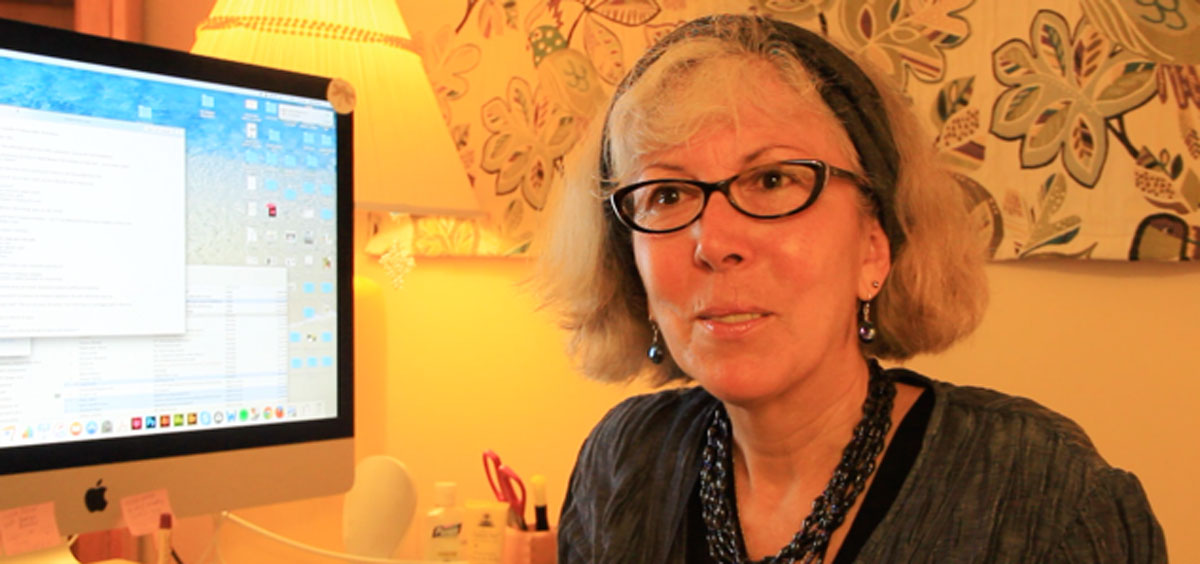Communiqué

Ohio University Professor Brings Students Back to the Basics: Pencil and Paper
By: Tim Sharp
Posted on:
Sketchnoting is sometimes rough but yields stunning results for designers
The crumbling castles and rolling green hills of Scotland fill the senses of most first-time visitors. For photographers and designers, the majestic vistas can be so overwhelming the design students often don’t know where to begin. That was the challenge visual communication professor Julie Elman saw when she accompanied students on a study abroad trip this summer. The mission was to get her creative, high-tech-oriented design students to slow down and focus. Her tools: a notebook and a pencil. Her process: sketchnoting, a combination of roughly drawn pictures and notes sometimes scrawled to make sense only to the author. And that’s OK.
Sketchnoting is the invention of Mike Rohde an interface and experience designer, working for Gomoll Research + Design, in Milwaukee, Wisconsin.
Initially, Elman’s students were less than eager.
“Right they’re thinking: Is this going to go in my portfolio? Are people going to look at this and think I’m terrible?” she said. “And I kept stressing to them it’s about ideas. So when you’re in Scotland and you’re going into a new community, where do you begin?”
Though sketchnoting is an effective way of conceptualizing, Elman said she knows why even those in other fields are reluctant to give it a try.
“I think it’s because they have a strong inner critic that tells them they’re not an artist, they can’t draw,” she said. “I see that with just about everyone.”
The whole point of sketchnoting is to keep the process in mind, Elman said.
“People just have the idea that they have to draw at a certain level in order to put pencil to paper and that’s not true because the process of sketchnoting, or sketching in general, or doodling is more about working with ideas; it’s not about creating wonderful art,” she said.
“While this was the first time Elman used sketchnoting with students, she said the overall process of sketching and working things out on paper has been around for years.” She said. She says it’s particularly effective for those in the creative world.
“There’s a lot of thinking that goes on and lot of visualizing on paper, so that there are lots of adjustments that need to be made — a lot of erasing, a lot of starting over — and it’s best to do it on paper to help think your way through the process,” she said.
Putting ideas to paper in this manner is a lot like doodling, which Elman said helps students process information.
“I asked all the students who participated in this program in Scotland — all four of them — asked them if they were called out for doodling in class,” she said. “And they all did and they all got called out for it — they all got in trouble for doodling.
She said she believes teachers should rethink students’ doodling.
“Teachers think they’re distracted, they’re not paying attention when actual studies show that doodling can help you retain information and comprehend it better,” she said.
While Elman’s study abroad students were initially hesitant to use her sketchnoting techniques, they eventually came around. Elman said she’s encouraged by the results.
“I knew I was going to do my best to help guide the students through this process, but it was the first time I’ve ever done this, so I was just going to make it work and know that there was room for improvement and room for flexibility,” she said.
And she believes the students benefitted from the technique.
“The students gave me good feedback about it, and also gave me feedback about things I want to consider the next time I do it,” Elman said.

